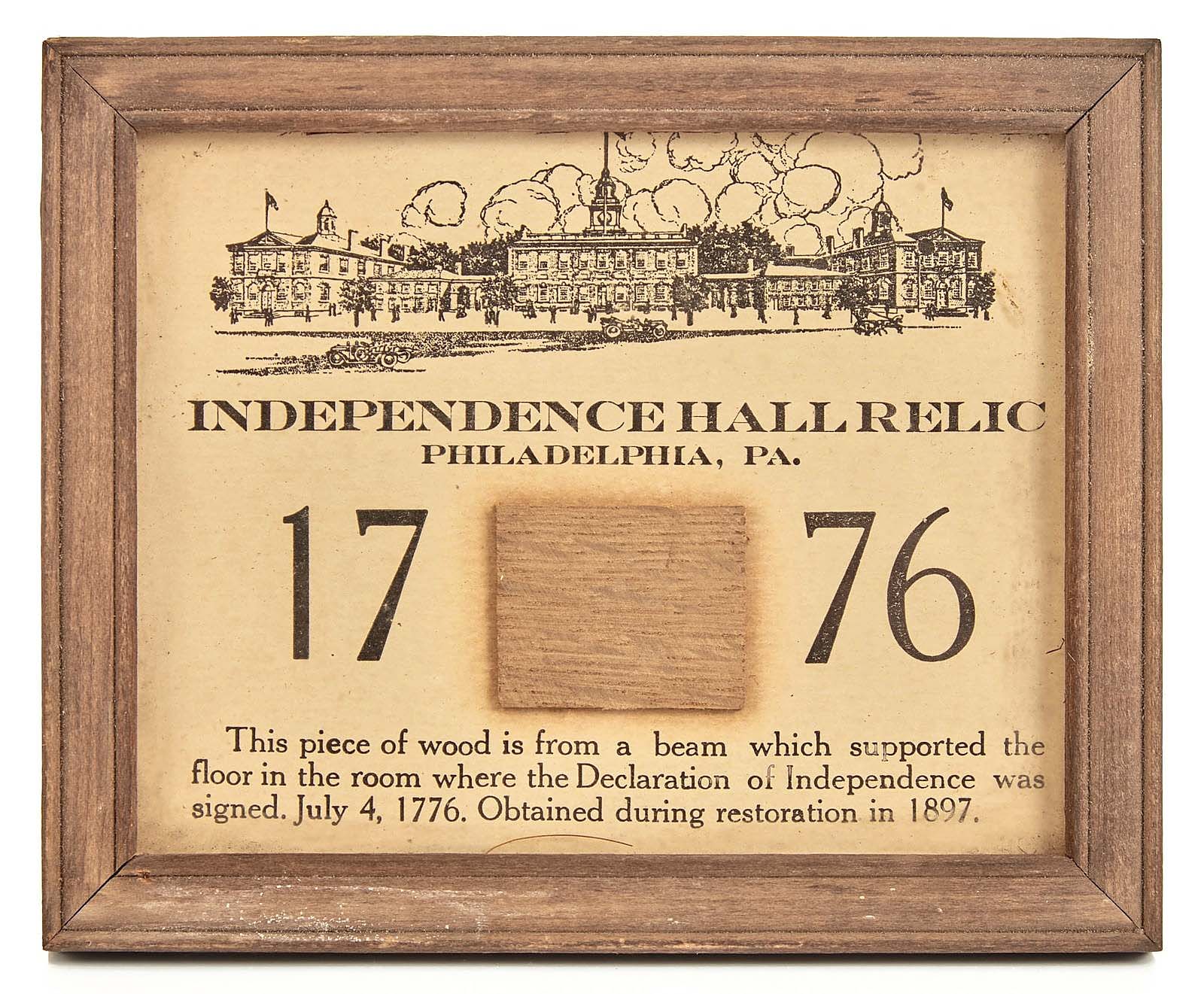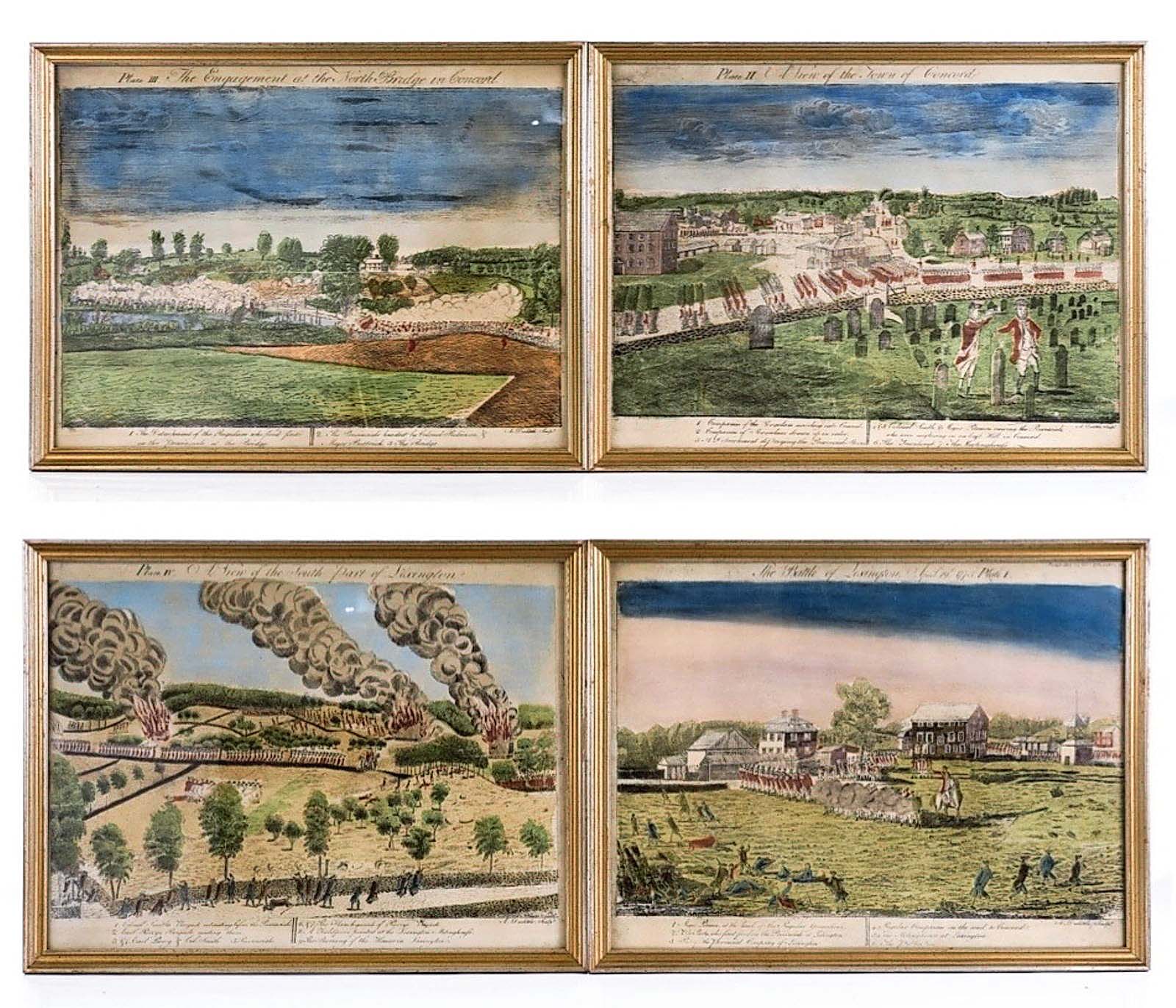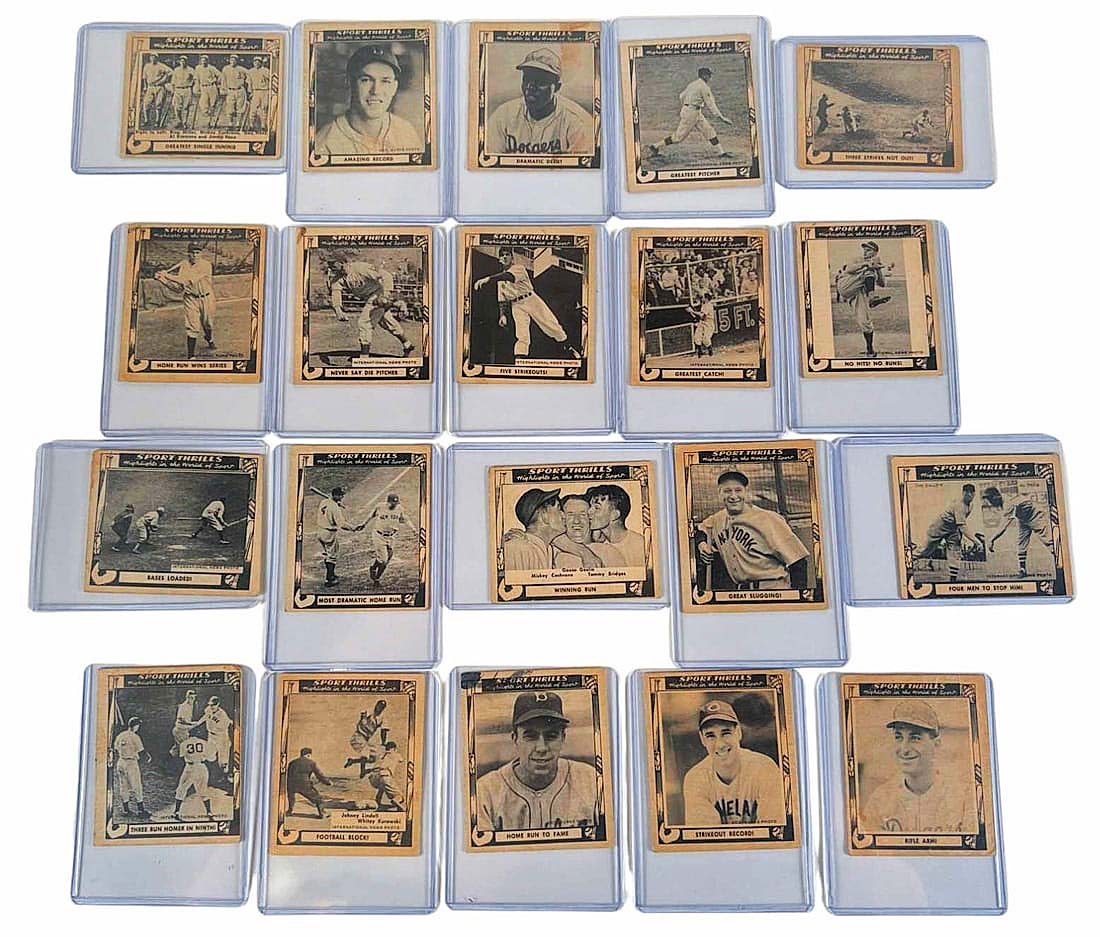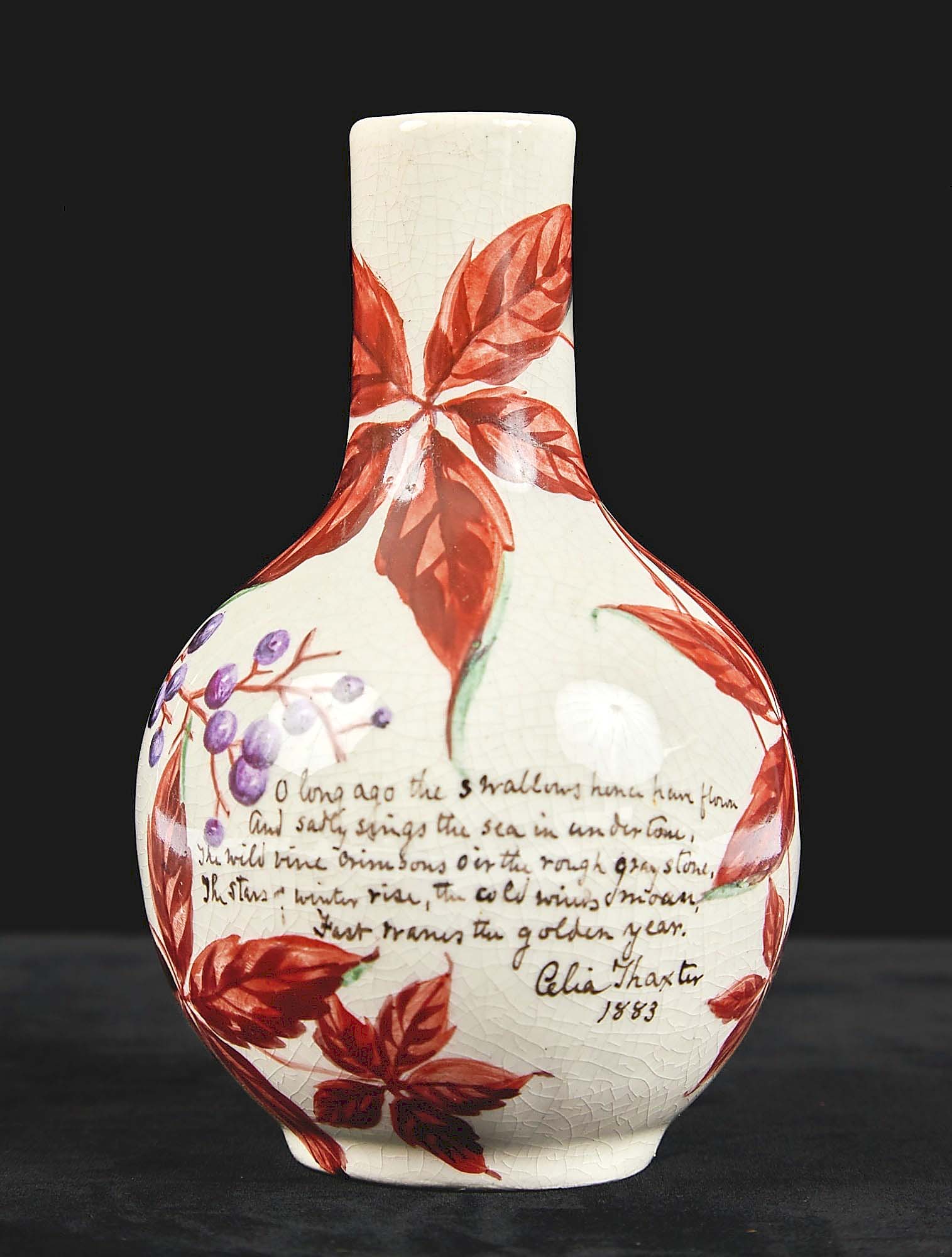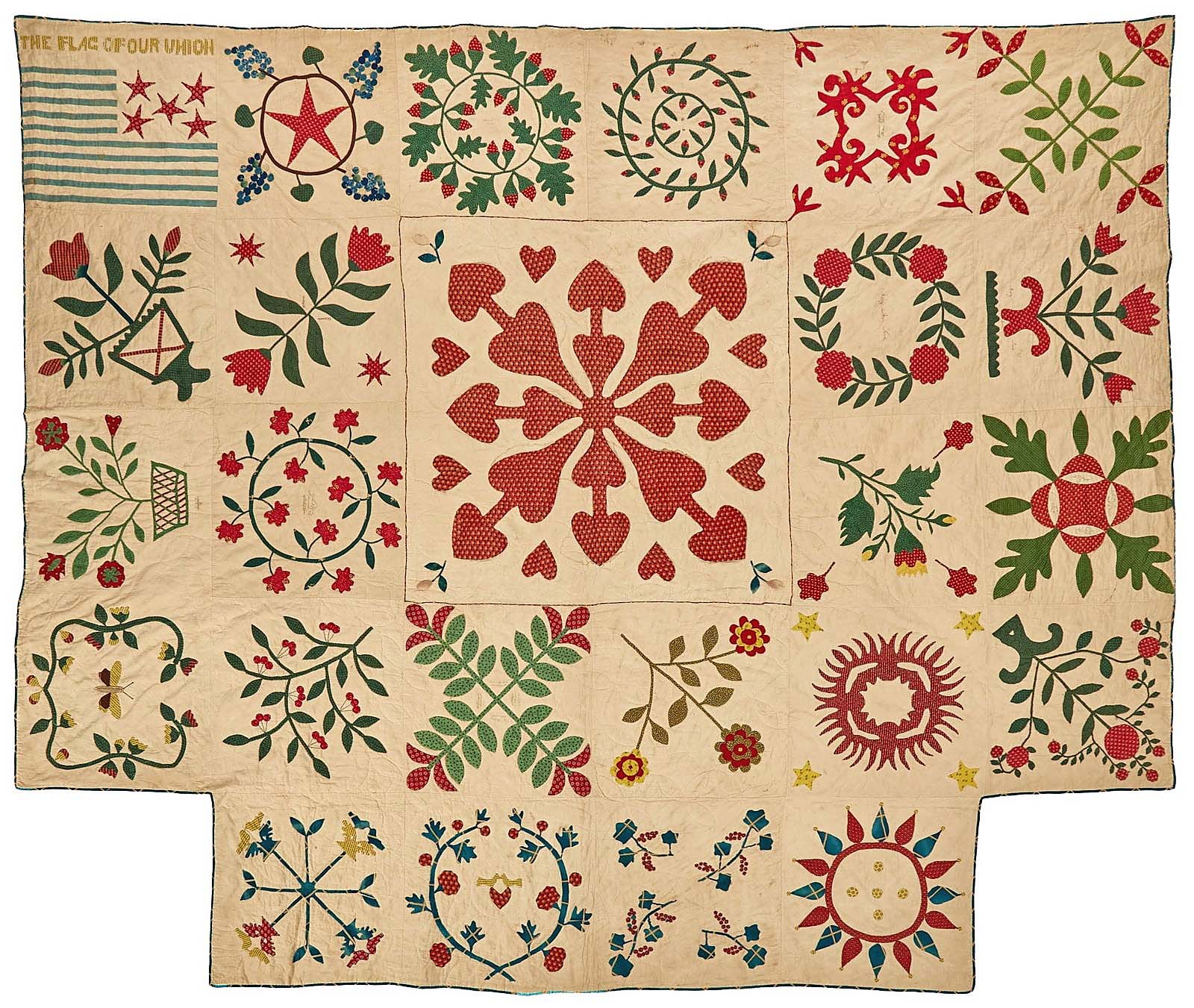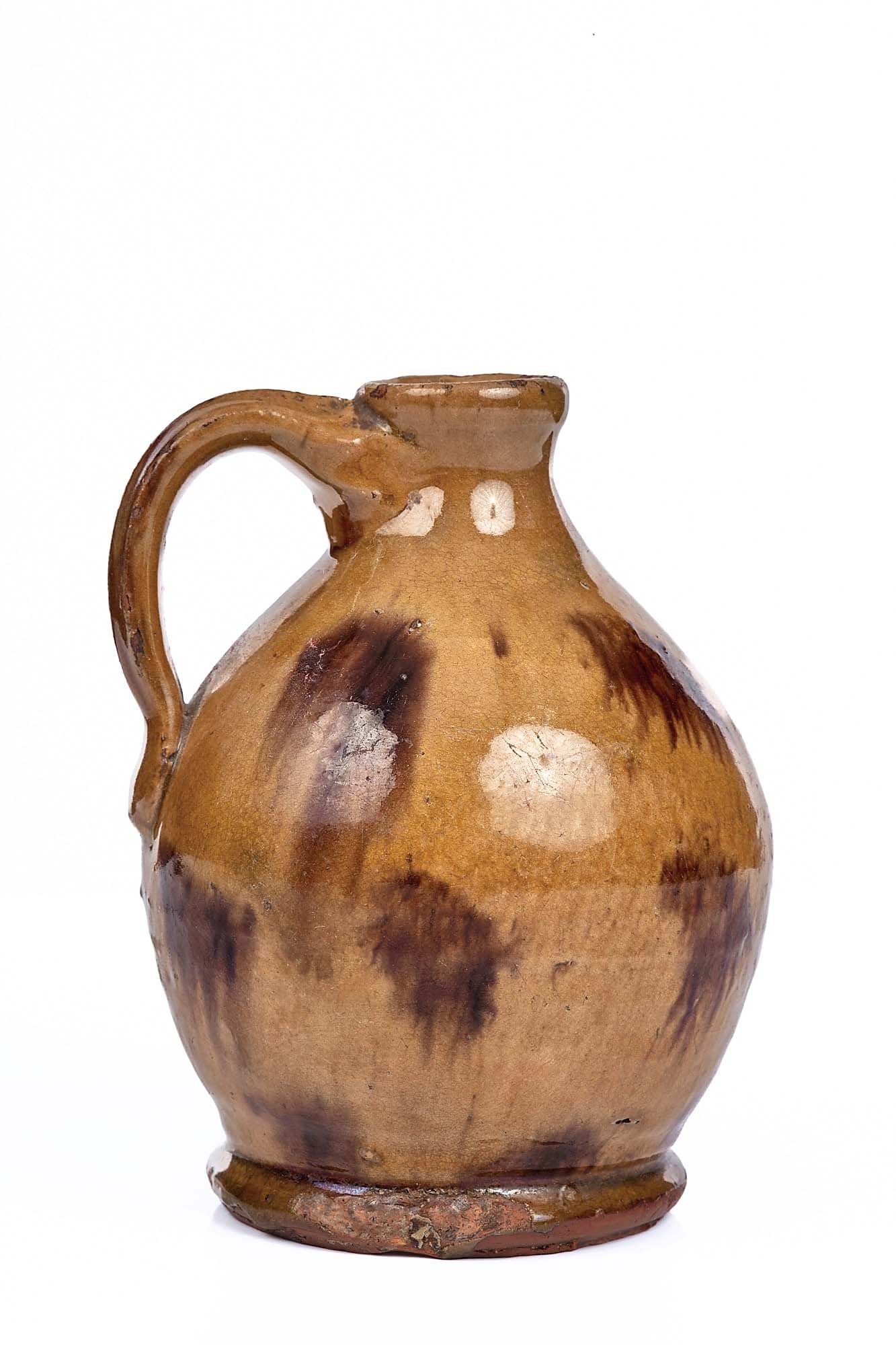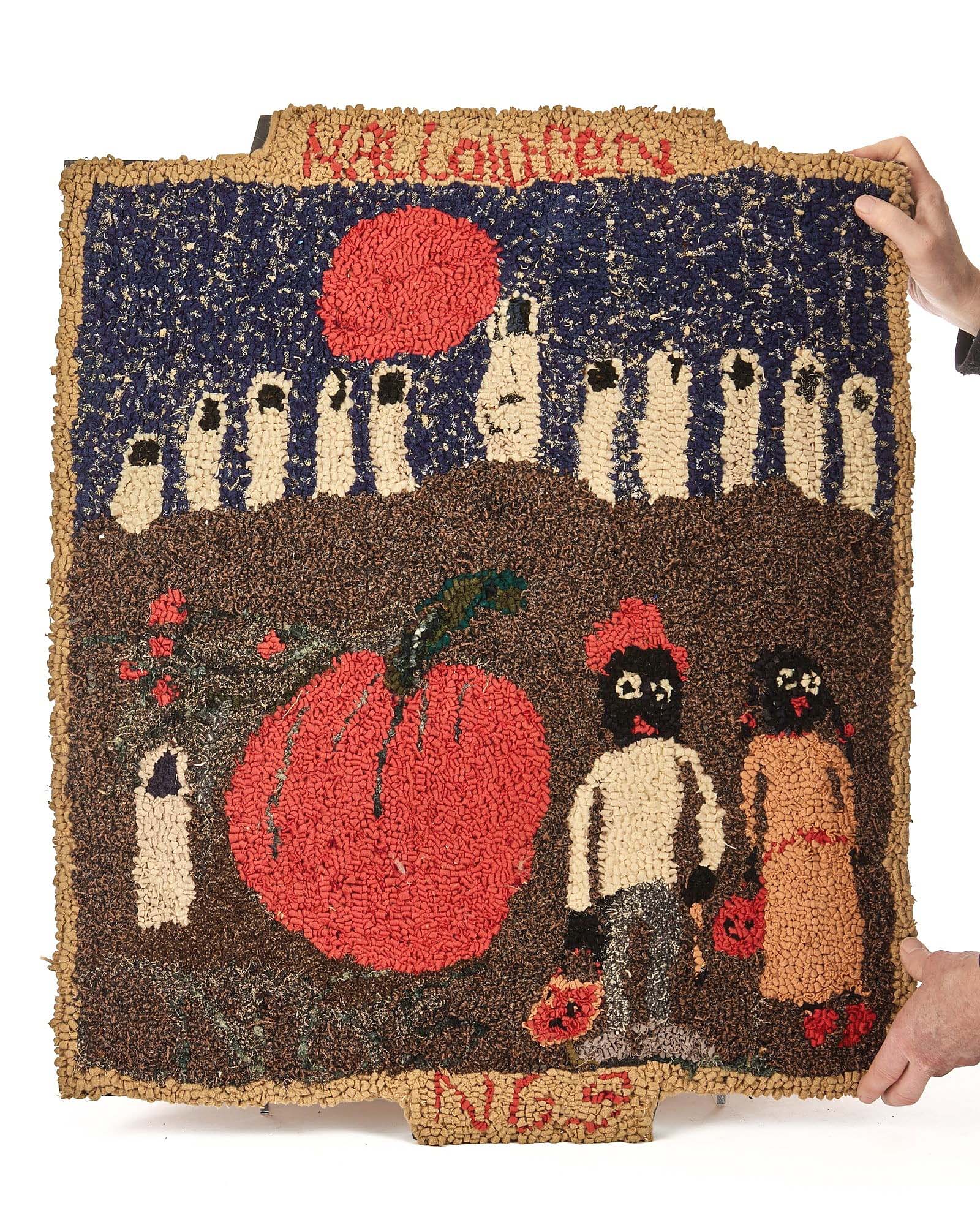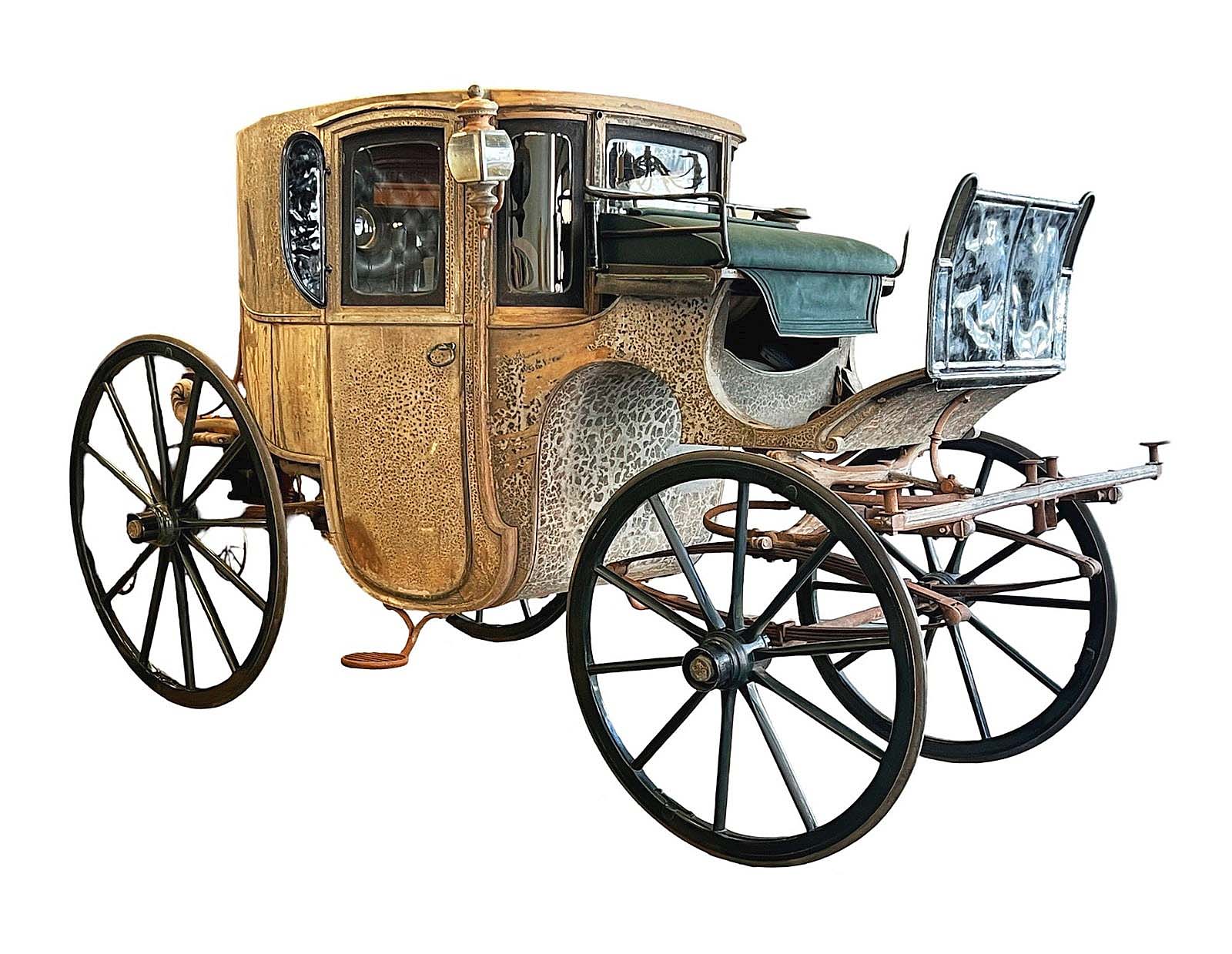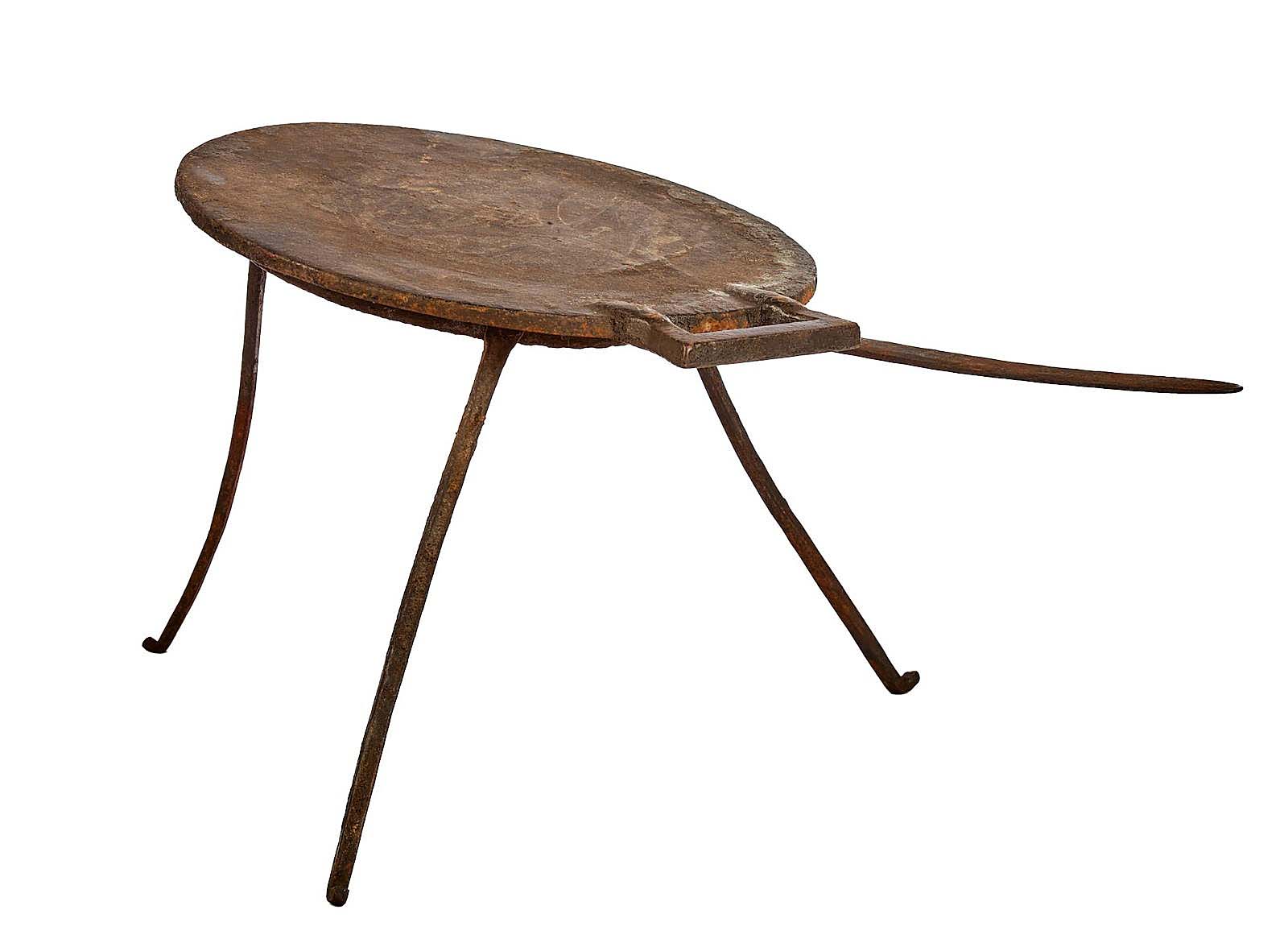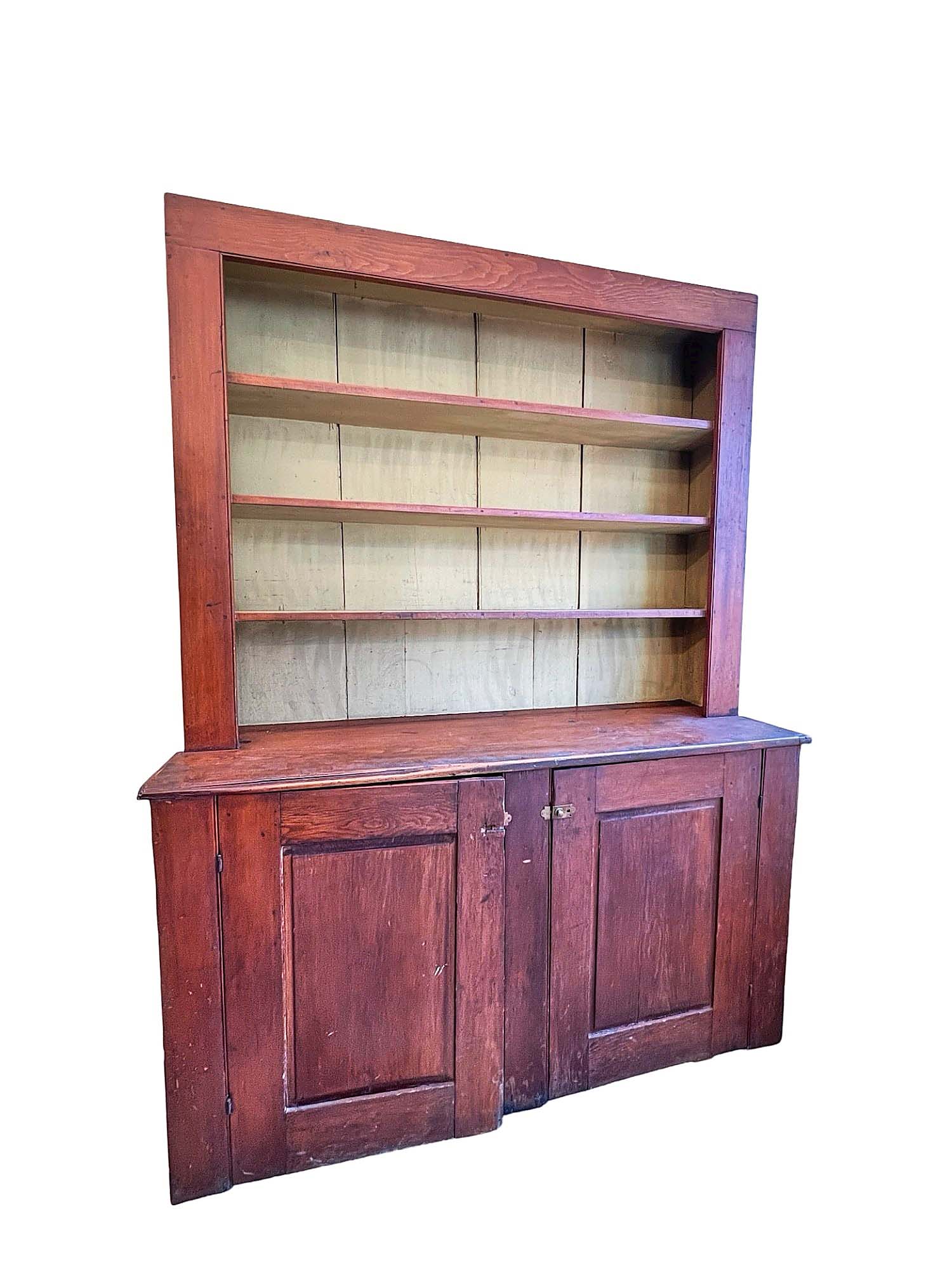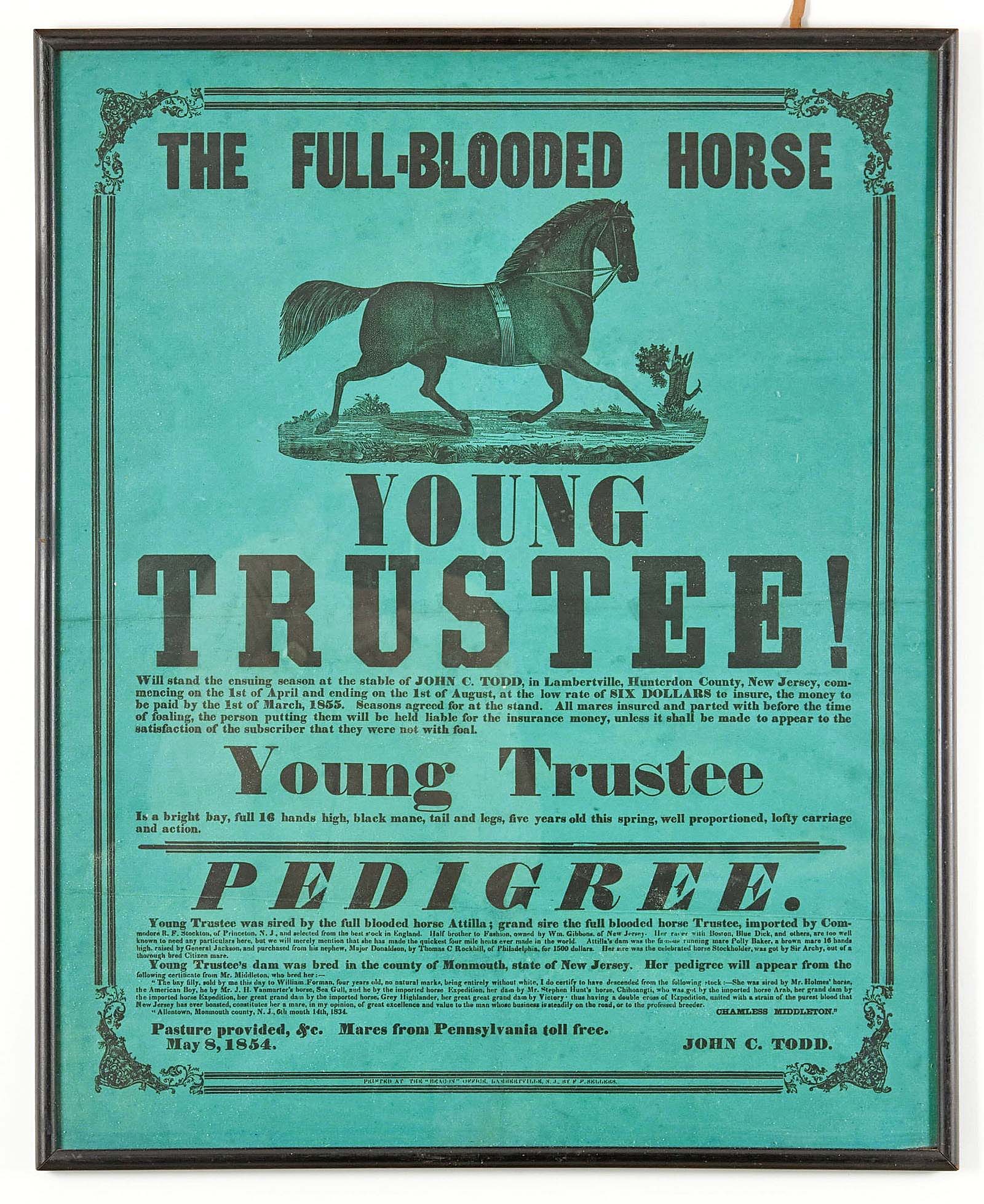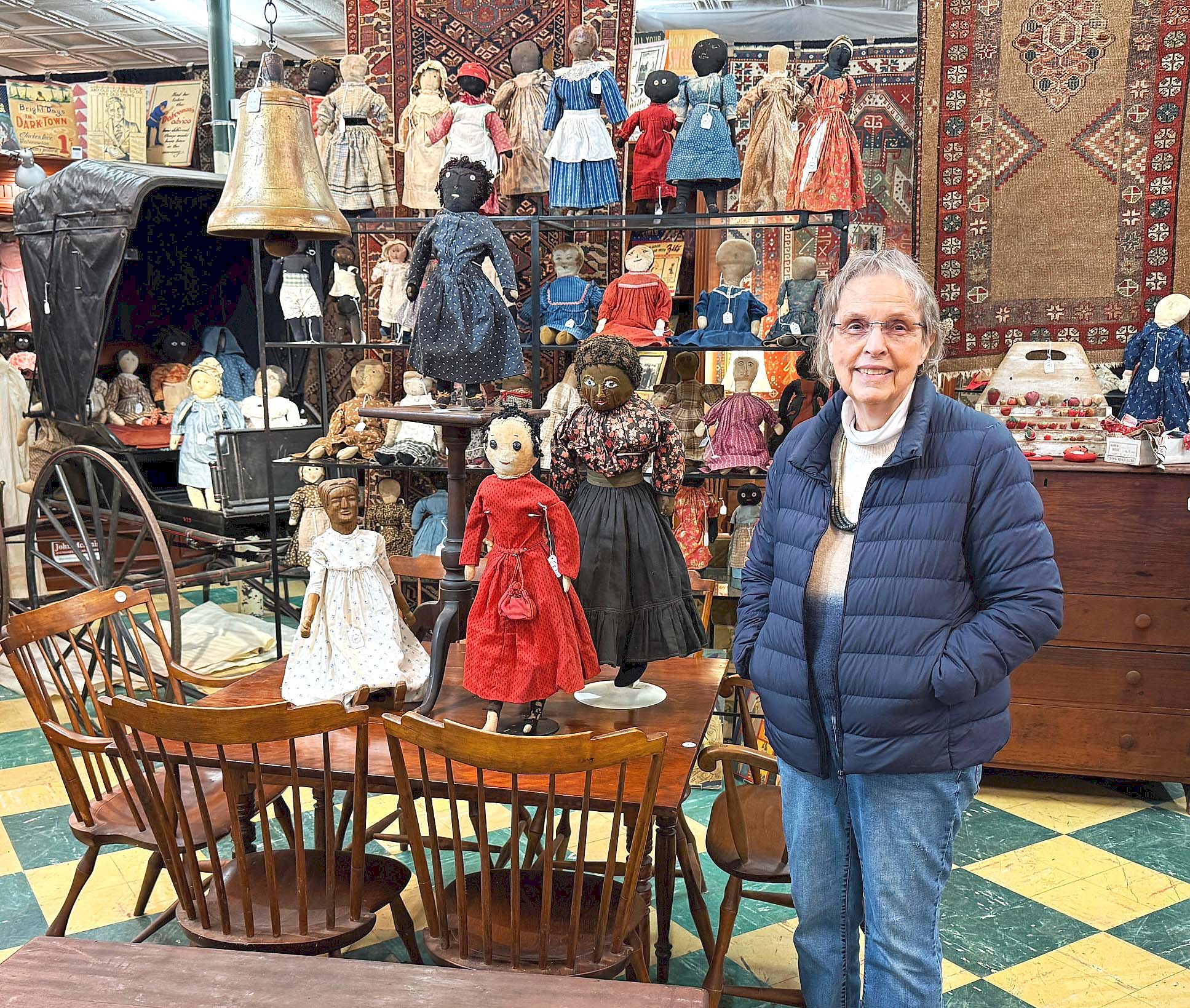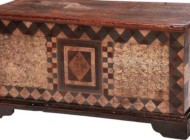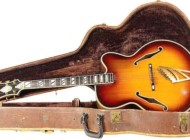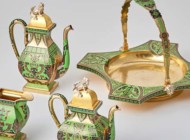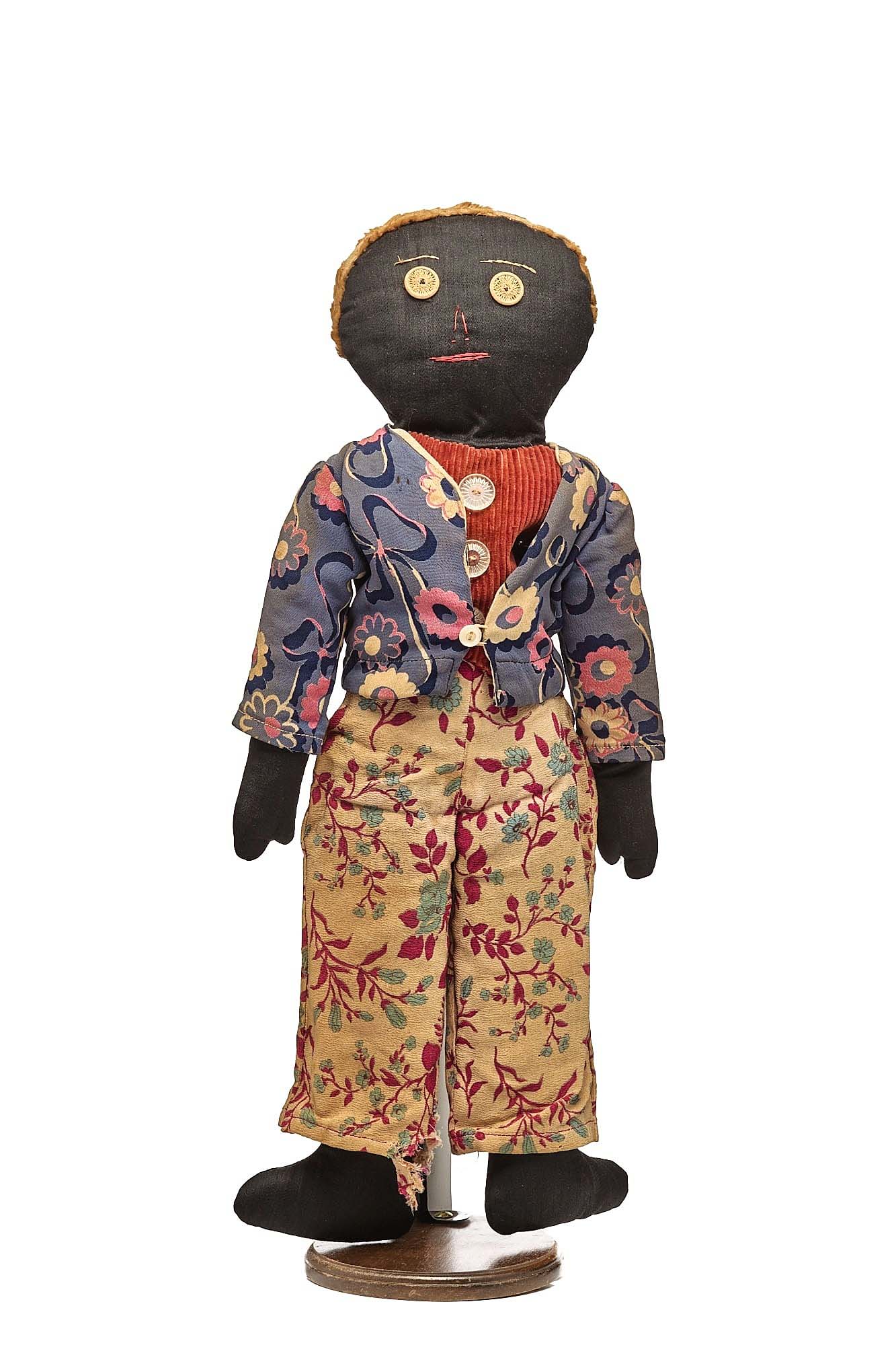
One of the stars of the sale was this 18-inch-tall Black boy doll. Most of his clothing was sewn on and, as Pat Hatch said in her description, “He picked his outfit all by himself.” There was strong internet bidding on this doll before the sale and he wound up selling for $9,920. Hatch commented that boy dolls are much scarcer than girl dolls.
Review by Rick Russack
AMESBURY, MASS. — Can you successfully sell more than 400 cloth dolls in one sale? As it turns out, yes. As part of a three-day sale, April 25-27, auctioneer John McInnis and gallery director Dan Meader devoted one full day to the Pat Hatch collection of cloth dolls, most of which dated to the late Nineteenth and early Twentieth Centuries. Their decision to sell so many at once was based on the idea that these dolls are truly folk art and would likely be much more interesting to a crowd that was attracted to a sale of country Americana, which comprised much of the rest of the sale. Meader set up the gallery with the dolls interspersed amongst painted country furniture and the other goods being sold. It made for a very colorful gallery display, and Meader later said that many sold to customers who might not have come to the gallery if a doll collection was the only draw.
The highest price of the doll collection, $9,920, was earned by a well-dressed Black boy doll, 18 inches tall. Each of the dolls was cataloged by Hatch, so bidders had accurate descriptions to go by. McInnis sales are livestreamed, and many of the dolls were held up as they were being sold, giving potential bidders a good, last-minute view.. The three-day sale realized $564,200, with the doll collection contributing $148,800 to that total.
Hatch has been collecting, buying and selling cloth dolls since 1974, and although she sold “all” her dolls, she kept the first one she ever bought, saying, “I’ve never offered that one for sale, and I just had to keep it now. It’s the only one I have.” She especially liked Black dolls and wanted to learn more about them. During an extended discussion a few days before the sale, Hatch said, “there’s really much more to the story of Black dolls than one might expect at first glance. I’m sure, although I can’t prove it, that some Black dolls were made by enslaved women and I’m certain that many came north via the Underground Railroad. That’s one reason, I think, that many are found in New England since so many Black families were helped by New England abolitionists. There’s deep cultural and social significance to these dolls that isn’t fully appreciated. In 2007, I did an exhibition of Black dolls at the Harvard (Mass.) Historical Society and Black families from as far away California and the Carolinas attended. I learned a lot talking to those families. At one time, there was a stigma attached to Black dolls; dealers who had them often kept them under their tables at shows, unwilling to openly display them.”
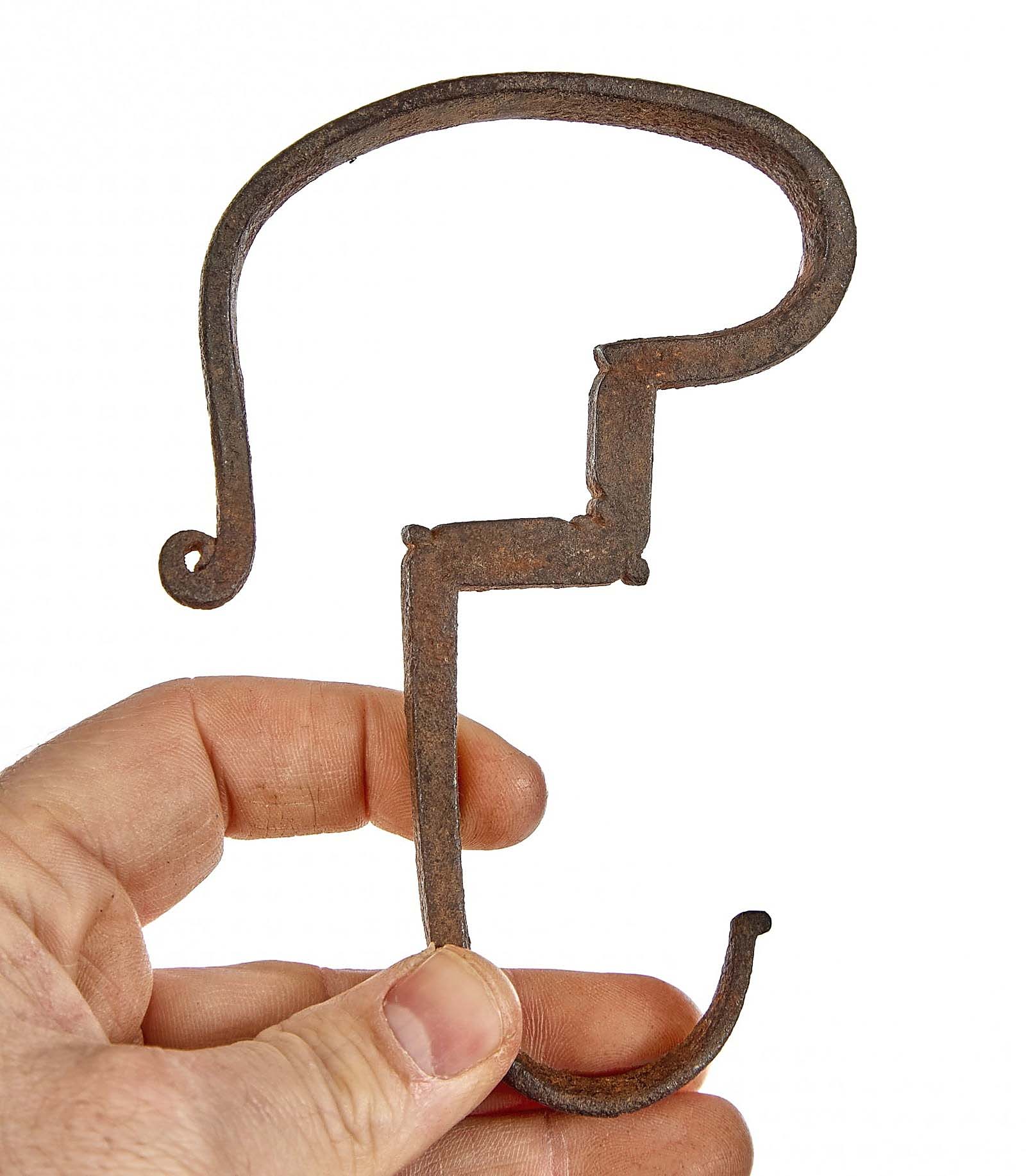
Many of the early wrought iron fireplace accessories had once been the property of a Long Island museum. Many retained museum numbers. This pot lifter was described in the catalog “as the finest example we have ever seen. A masterfully crafted (possibly Seventeenth Century) piece.” It realized $744 ($100/200).
A few days after the sale, Hatch said that she was very pleased both with the results and her dealings with Meader.” One of the nice things for me is that I’ve had calls from long-time customers telling me how pleased they are with dolls they bought. That’s a really good feeling for me.”
The rest of the auction featured several early wrought iron objects, including a group that had been deaccessioned from a museum collection 40 or 50 years ago. There were forms that neither Meader nor McInnis had seen before. One such example was a two-sided communion wafer mold with religious symbols; it sold for $372. One of the exceptional items, selling for $744, was a wrought iron pot lifter, which was cataloged as “the best we have seen” and was possibly dated to the Seventeenth Century. A puddle-cast flat iron griddle, with a three-legged stand, sold for $279 and a Nineteenth Century wrought iron rush lamp, standing 29-inches tall, brought $434. The cast iron offerings included a wrought iron dart gun harpoon with a toggle head that was marked “LB” for lardboard boat and “CWM” on the reverse for Charles W. Morgan. The Morgan, launched in 1841, has been restored and can be visited at the Mystic Seaport (Mystic, Conn.) where it is said to be the oldest American commercial ship still afloat. The harpoon found its mark at $3,410.
The sale included other unusual collections: there were several granite mill stones, a collection of unusual nautical items and a very fine selection of early hand-forged fireplace equipment. There were full size carriages, goat carts, Asian works of art and mutoscope advertising posters.
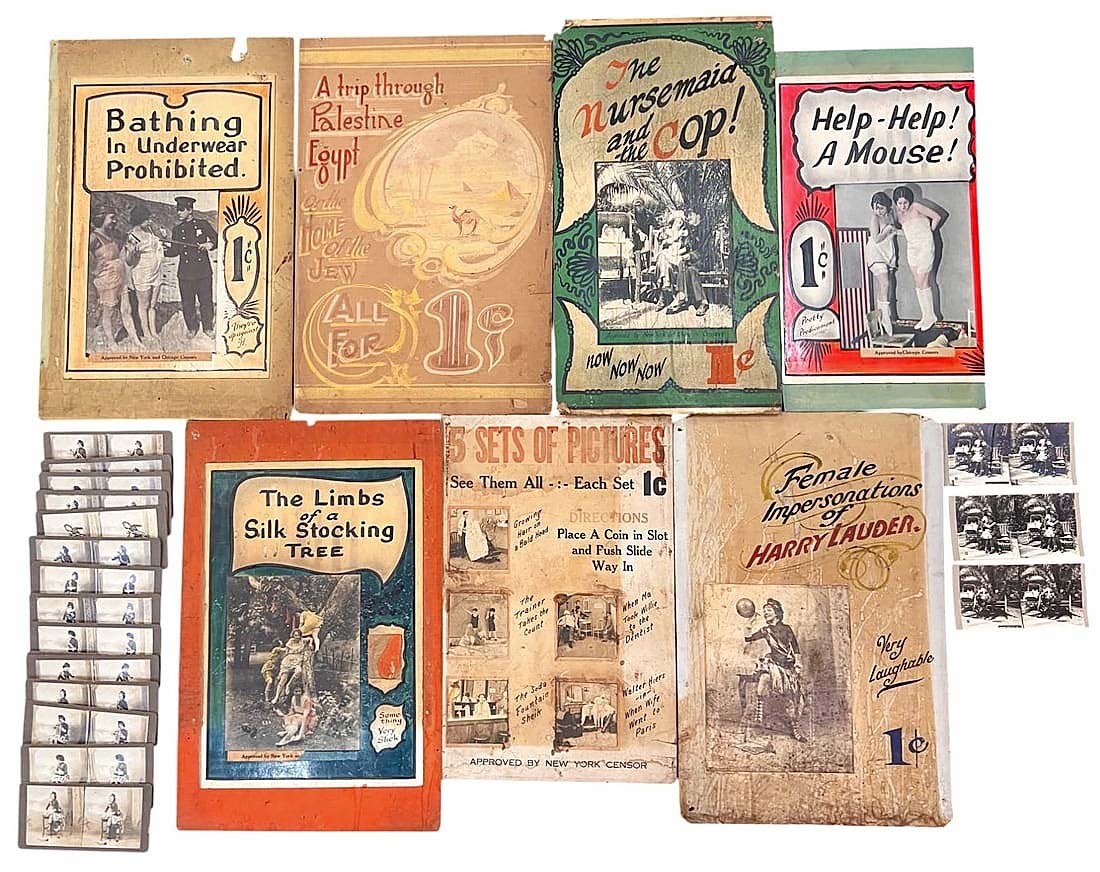
Considered forerunners of motion pictures, mutoscopes were hand-cranked penny arcade machines. Some of the posters designed to advertise mutoscopes were risqué; this lot of seven such posters from the 1920s reached $992 ($300/500).
As you would expect from a McInnis auction, there was a wide selection of woodenware and painted country furniture. Several items in the sale came from the Beacon Hill home of the Dallas family. George Mifflin Dallas (1792-1864) was the 11th vice-president of the United States, serving during the 1845-49 presidency of James K. Polk. Dallas was an avid collector and chess player; the sale included a number of unusual chess sets, with one of them realizing the top price of the first day: $1,364. It was made of carved bone and included a custom case. Dallas also had a large collection of Currier and Ives prints. A rare copy of the Boston Gazette, dated June 25, 1770, detailed the events of the Boston Massacre, which had taken place only two months earlier. The story had originally been printed in a London newspaper and was issued as a supplement to the Boston Gazette; it sold for $2,790.
After the sale, Meader said, “I really didn’t know how the dolls would do. I’ve never done that before — so many closely related items in one sale, and all unreserved, but I really think it went well. There were over 400 lots and only five lots didn’t sell. Pat Hatch was very happy. There were over 500 people watching the sale on LiveAuctioneers. There was an active group of about 30 bidders in the gallery. The rest of the sale went, pretty much, as we expected. The country furniture did well and so did the wagons and coaches. That was another area that we didn’t know what to expect.”
Prices quoted include the buyer’s premium as reported by the auction house.
For information, 978-388-0400 or www.mcinnisauctions.com.

